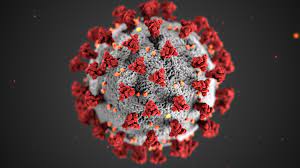July 3, 2024 – A groundbreaking study published in Applied and Environmental Microbiology has uncovered the presence of both anaerobic and aerobic bacteria in commercial tattoo and permanent makeup inks. This research, led by Seong-Jae (Peter) Kim, Ph.D., of the Division of Microbiology at the National Center for Toxicological Research, U.S. Food and Drug Administration, marks the first investigation into anaerobic bacteria within these products.
“Our findings reveal that unopened and sealed tattoo inks can harbor anaerobic bacteria, known to thrive in low-oxygen environments like the dermal layer of the skin, alongside aerobic bacteria,” said Kim. “This suggests that contaminated tattoo inks could be a source of infection from both types of bacteria. The results emphasize the importance of monitoring these products for both aerobic and anaerobic bacteria, including possibly pathogenic microorganisms.”
Methodology and Key Findings
The primary aim of the study was to evaluate the prevalence of both aerobic and anaerobic microbial contaminants in tattoo inks available on the U.S. market. Researchers assessed 75 tattoo inks from 14 different manufacturers. For the detection of aerobic bacteria, they mixed 1 to 2 grams of tattoo ink solution with appropriate media and incubated them in a standard incubator. To detect anaerobic bacteria, the ink solution was incubated in an anaerobic chamber, which is oxygen-free and flushed with gases such as nitrogen, carbon dioxide, and hydrogen.
The findings were alarming: approximately 35% of the tested tattoo and permanent makeup inks were contaminated with bacteria. “Both types of bacteria, those needing oxygen (aerobic) and those not needing oxygen (anaerobic), can contaminate the inks,” Kim explained. Moreover, there was no consistent correlation between product labels claiming sterility and the actual absence of bacterial contamination.
Implications for Public Health
The rising popularity of tattooing has been paralleled by an increase in tattoo-related complications, including infections. “Microbial infections constitute just one aspect of these complications,” Kim noted. “In addition to microbial infections, immunologic complications such as inflammatory reactions and allergic hypersensitivity, as well as toxic responses, represent a significant portion of these issues.”
The study underscores the critical need for ongoing monitoring of tattoo inks to ensure their microbial safety. It also highlights the potential health risks associated with contaminated tattoo inks, calling for stricter regulatory measures and more comprehensive quality control in the industry.
Future Research Directions
Kim and his team plan to advance their research by developing more efficient microbial detection methods for tattoo inks, aiming to make the process quicker, more accurate, and less labor-intensive. They also intend to conduct systematic studies to better understand microbial contamination in tattoo and permanent makeup inks, including the occurrence, co-occurrence, and diversity of microbial contaminants. This research is essential for developing strategies to prevent contamination and ensure the safety of these widely used products.
For more detailed information, the full study is available in Applied and Environmental Microbiology (2024). doi.org/10.1128/aem.00276-24












